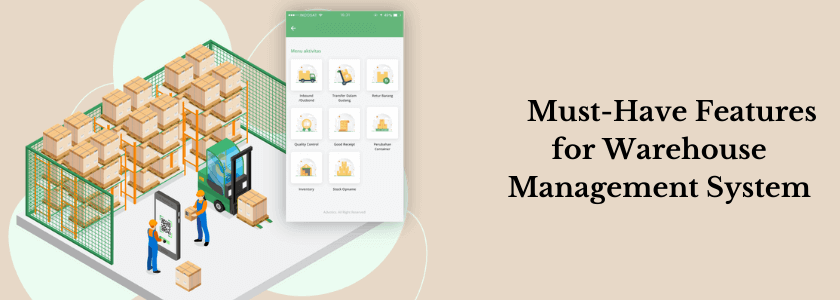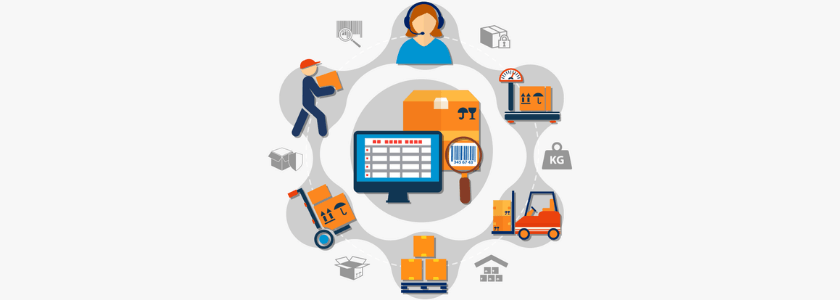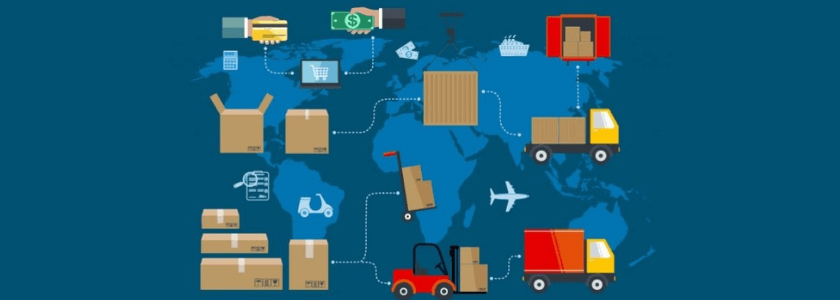Warehouse Management System Software and Its 10 Best Features
Providing superior distribution services to consumers or other businesses through third-party logistics providers is the main component of some enterprises' success and survival.
All stakeholders in a supply chain including third-party logistics companies can have a significant impact on the perception of an organization. The logistics, trucking, and warehousing industries are competing to provide solutions. These manufacturing solutions must be highly effective, well-managed, and personalized to the client's needs.
Logistics companies have implemented internal systems called Warehouse management system software, also known as warehouse management systems software (WMS software), to manage complex tasks within the supply chain. These are one of today's broader categories of enterprise software.
A warehouse management system software smoothly addresses the specific consumer demand requirements of distribution channels, is still a requirement of supply chain management.
WMS allows you to ensure that products and commodities are moved most efficiently and cost-effectively possible. Warehouse layout, inventory management, picking and packing items, receiving and shipping, labor management, and reporting are all possible with it.
Why WMS?
With WMS, Warehouse employees can easily keep up with day-to-day operations and work efficiently to meet targets.
- A warehouse management system software can boost labor efficiency by providing real-time inventory visibility, increasing warehouse accuracy, and lowering inventory hazards.
- It eliminates the need for paperwork and manual processes.
- It allows warehouse operations to be automated to save time and effort for employees.
- It allows you to create multi-dimensional barcodes, scan QR codes, print labels, see a list of purchase orders, and real-time inventory consumption.
- It eases inter-company warehouse transfers and gives staff members authorization.
Consider your company's specific functional requirements when choosing a WMS. Make sure the features you needed are included. When choosing a solution having the WMS functionality checklist on hand might help you avoid overlooking important features. A good warehouse management system should have the following characteristics.
10 Must have Warehouse Management System Software Features

Although some warehouse management software solutions resemble inventory management software, the majority of warehouse management system software solutions are focused on the physical and logistical aspects of warehouse management.
When selecting the best WMS features for your warehouse to keep in mind:
1. The interface that is easy to use
When selecting a WMS, look for menus that are simple to use and help screens that can boost usability. Ascertain that the WMS facilitates data entry and the creation of template reports and charts. You might desire a real-time dashboard display that allows customers to get all of their vital data from a single area.
A WMS with a basic UI entails the following:
- Users can adapt faster and spend less time setting up and monitoring everyday operations.
- In addition, instead of weeks, new staff can be up and running in a matter of hours.
- All staff will be able to take advantage of the new technology to work more efficiently.
2. Seamless Integration with Enterprise Resource Planning
You must ensure that your WMS and ERP will work together. When data from a WMS is linked to your ERP, it speeds up the process and allows for more accurate and real-time data tracking across the firm.
It ensures that all data is saved on a single platform and that it is adequately coordinated with other departments. It improves data accuracy and tracking in real-time across the entire organization.
For instance, if the sales team is unfamiliar with a warehouse management system, they will be unable to efficiently update their consumers on the status of their orders. It is critical to ensure that departments are not left out of the loop by ensuring seamless interaction.
3. Tracking and Analysis

Your WMS should provide you with both the big picture and the nitty-gritty details as needed, from total lines selected to individual employee performance.
A decent warehouse management system software will make it simple to develop reports and graphics. It will allow you to see all you need to know about your warehouse's performance. A genuinely great warehouse management system will allow you to define performance standards and track warehouse performance against them.
Companies benefit greatly from real-time tracking, especially when it comes to inventory management. You may see your inventory levels in real-time as a result of this.
Your warehouse management system software should trace an item's every step from the minute it enters your warehouse until it exits through the dock. A corporation may maximize product supply needs and personnel efficiency to the best extent possible by having more information into every phase of a transaction, hence maximizing customer service.
Furthermore, many of the top warehouse management software providers provide multi-location tracking, allowing you to operate with different warehouses with ease.
Keep your eyes peeled for the following features for tracking:
- Performance analysis
- Management of KPIs
- Management of Workflow
- Support for Multiple Currencies
- Tracking in Real-Time
- Support for several languages while integrating
- Integration of Taxes
4. Mobile Deployment
Employees in today's tech-driven environment travel internationally. They work flexible hours and require fast access to warehouse, meeting, and conference data. A good warehouse management system has a mobile-friendly interface that allows it to be accessed from handheld devices.
Consider the types of mobile alternatives available and the equipment required to use them when looking at warehouse management features. Even if there is an additional cost, it is worthwhile. You can build a mobile-friendly warehouse app as well with Custom Mobile App Development Services.
5. Inventory Flow (Inbound and Outbound)
Picking and sending products is, without a doubt, a time-consuming and perplexing operation that necessitates careful organization and supervision. The status of the warehouse is stated on a goods receipt for a purchase order, manufacturing order, delivery, or other goods receipt.
However, inventory management entails far more than simply knowing whether you have products in stock. This aspect of warehouse management entails knowing where to find specific items when they are required. The technology should enable you to locate the position of the items, making picking and packing them faster and easier for your crew.
It also helps to ensure that things can be quickly located when they need to move. Kitting and cycle counting, cross-docking, and other inventory-related tasks are all managed by WMS.
6. Labor Management
Aside from the several distinct features that allow actual objects and packages to be identified and tracked, another WMS purpose is labor management tools. Proper labor management can assist in keeping employees on track and identifying processes that are wasting valuable resources unnecessarily. Employees can clock in and out by scanning QR codes or inserting pins that track when they enter and exit the office.
Today, vendors can incorporate sophisticated labor management modules into some of the top warehouse management software that businesses employ as part of their enterprise automation solutions.
7. Paperless processes
The goal nowadays is to be paperless or to use as little paper as possible in the warehouse management process. Going digital reduces the risk of losing information, and there is no chance of losing physical paper. The days of employing outdated warehouse management procedures and ledgers are over.
The web-enabled and mobile-friendly software or application includes every detail, saving time and promoting real-time tracking of items.
8. Risk Management
An effective business development strategy must include risk analysis and comprehensive planning. Modern WMS allows for the analysis of operational data and the generation of projections while taking potential hazards or present interruptions into account. WMS's demand planning feature prevents overstocking, product waste, and stockouts. Products that are in great demand or are seasonal can be tracked.
9. Dashboards and Communication
Communication is essential for every organization that wants to prosper. Chat services are available in some warehouse management systems, allowing users to communicate with other team members in real-time. An agile workplace benefits from quick communication. A manager is already squandering time if they have to leave their office to find a single employee to recommend a work reassignment.
10. Provide Upgrades and Support
The WMS vendor is just as crucial as the application itself. Look for WMS vendors with a strong track record of deployment and support. When researching WMS solutions, request a list of customer references.
Help options include on-site or phone support during a defined time range, as well as direct response support capacity. Buyers should carefully review the support clauses in vendors' service level agreements (SLAs) to guarantee that they will be covered in the event of an emergency.

Conclusion
A warehouse management system is a web-based and mobile-friendly software. Warehouse management system software features provide a one-stop shop for everything a warehousing organization requires to flourish.
With our warehouse management solution, you can maximize labor utilization while minimizing obsolescence.
Take your time while searching for the ideal solution because one size does not fit all, and keep your specific WMS system requirements in mind while searching for the right solution or building one with your choosen software development company .
Feel free to contact us if you want to learn more about the warehouse management system software functionality and how you can use it.


